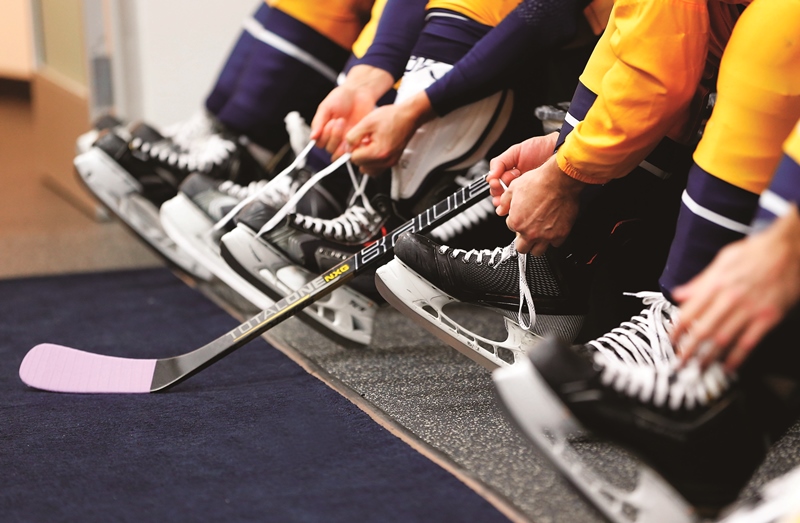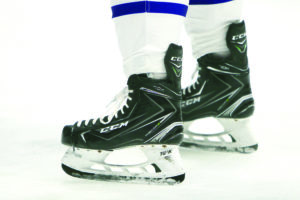
Basketball, football, baseball, soccer and lacrosse are all fine sports. Like hockey, they are sports where teamwork is essential, as are a strong work ethic and coordination. Hockey players, however, have a special ability that is not required in any of those other sports. Any person can walk onto a field or a court and start playing. Stepping onto frozen water, however, and playing ice hockey is like a super power. What helps give the ice hockey player that super power is the skate.
A study posted on the National Geographic website suggests the first ice skates were invented more than 5,000 years ago from animal bones. Skates, especially ones made specifically for ice hockey, have gone through many changes and advances over the years. This year is no different.
Manufacturers, including Bauer, have plenty of new changes they are excited about.
“We’re introducing a new Vapor line of skates,” said John Davidson, senior brand manager for skates at Bauer. “We have a huge legacy behind our Vapor family. It’s been out for over 30 years now. It’s quickly become the most popular skate for the usage at the professional level. We spent a lot of time revamping the skate line and making sure it caters to the player looking for the ultimate quickness.”




